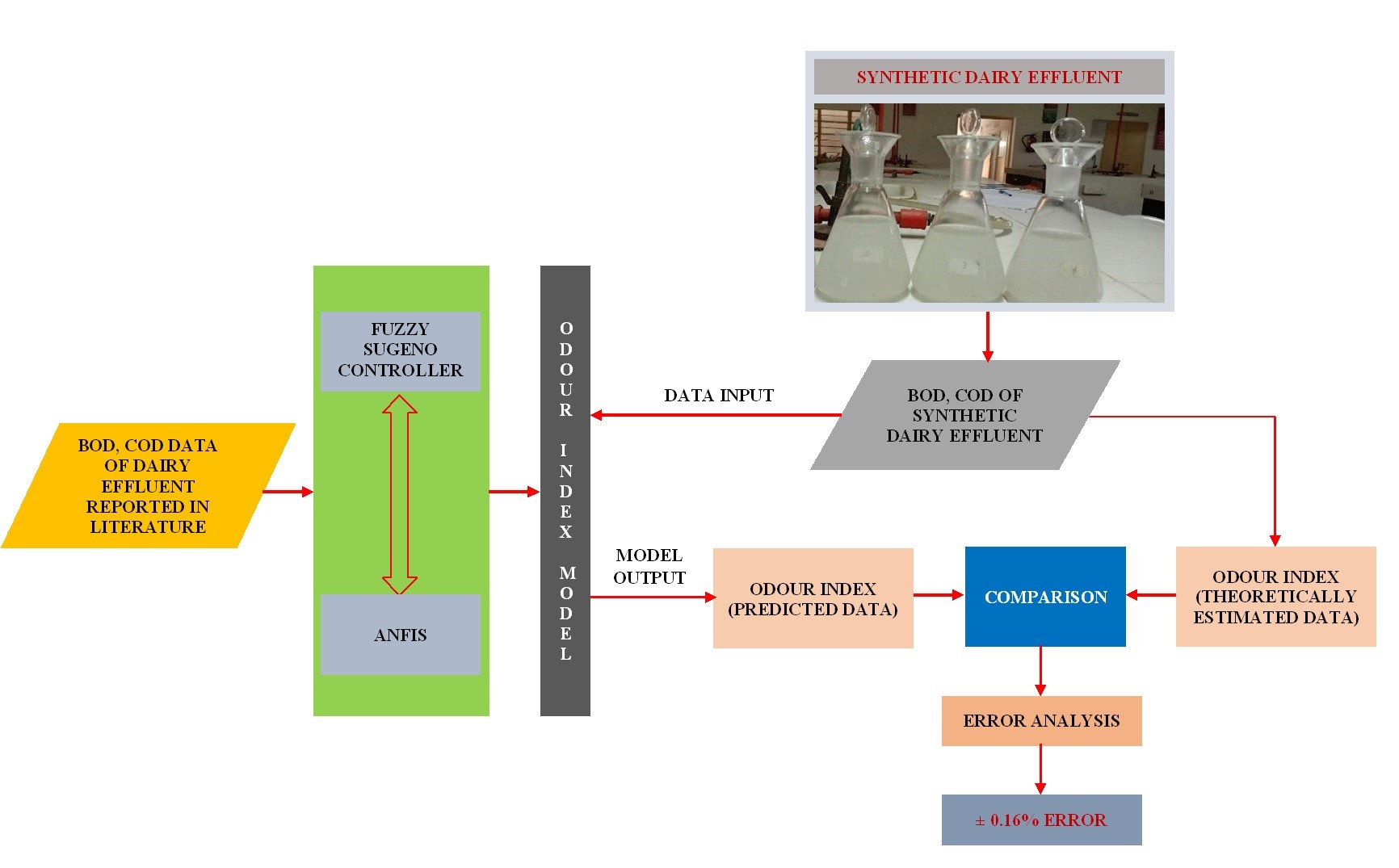
People are prompted to complain about air pollution by offensive odours. They can produce psychological consequences, such as nausea, headaches, lack of appetite, breathing difficulties, and various adverse reactions in some circumstances. Among various industries, the dairy industry emits the most noxious odours. The human nose is the only trustworthy sensor, and numerous laboratory and field methods for quantifying human observations have been devised. Most odours are difficult to quantify, as evidenced by the fact that contemporary technology has yet to provide a fully precise method for quantifying them. As a result, the current study examines the possibility of employing fuzzy logic to predict odour intensity from dairy effluent characterisation. In this work, an Adaptive Neuro Fuzzy Inference System (ANFIS) based prediction model using Sugeno controller is developed for finding the Odour Index of the dairy effluent. COD and BOD are considered as input parameters for the model with triangular membership function for five linguistic variables. The standard odour index estimated from the literatures is used for modelling. The predicted odour index obtained from the ANFIS model for synthetic dairy wastewater is validated against the standard odour index and the average error is found to be ± 0.16 %.
Total file downloads: 4